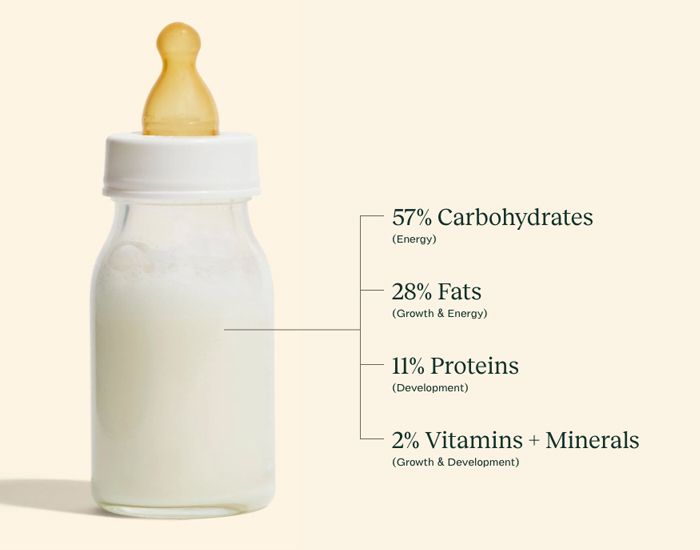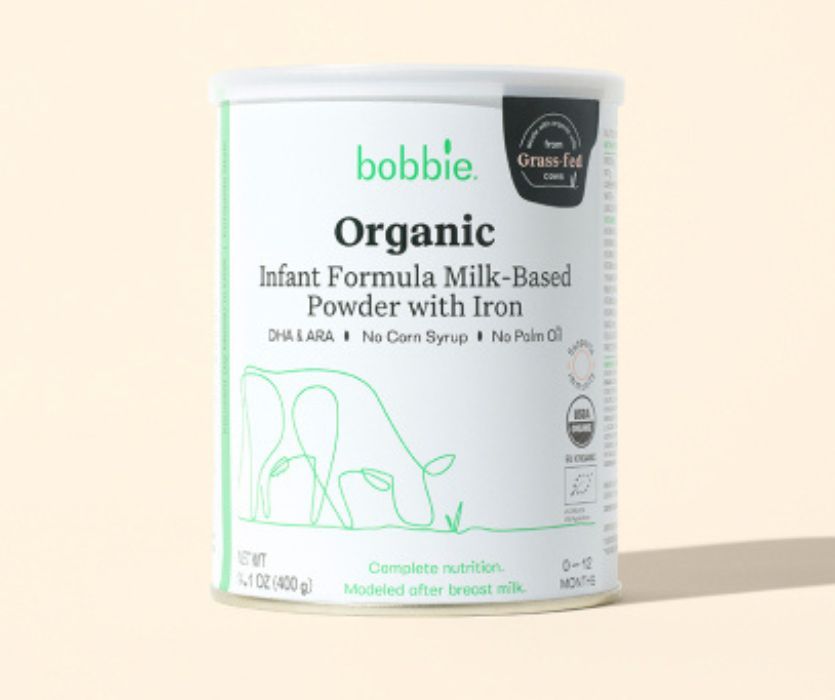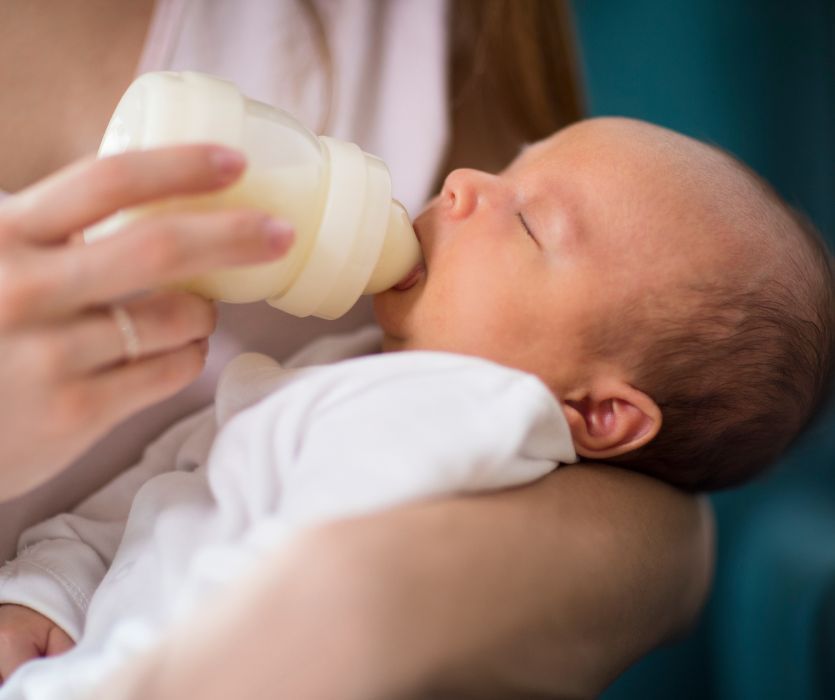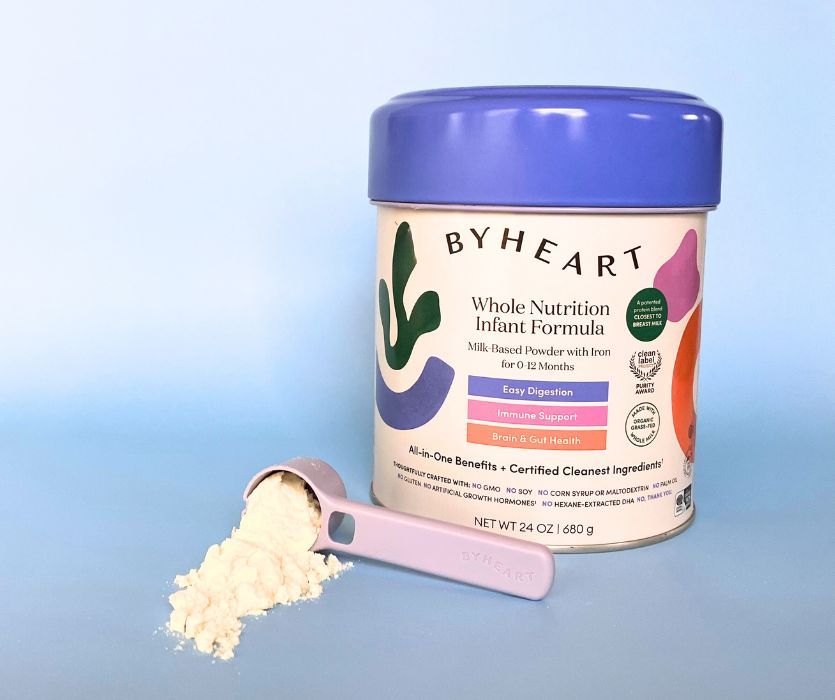New formula companies are a rare bird so I was intrigued when I heard about Bobbie – the first new infant formula to hit the U.S. market in a long time.
How is Bobbie different from other formulas?
Bobbie is a European style organic infant formula that meets the U.S. FDA’s nutritional requirements and is sold directly to consumers through their website.
Until recently, some parents in the U.S. were importing infant formula because they preferred European formulas to those available in the United States. Technically this is illegal.
What could be so bad about using a product that’s regulated in Europe?
The problems with using foreign formulas start with the packaging. Namely, if you can’t read the language it’s written in, it’s pretty damn hard to know what it says.
Many U.S. parents were having issues figuring out the ratio of formula to water; if it was too thick, babies had a hard time drinking it and getting sick. If it was too thin, there was a danger of the babies not getting enough to eat and becoming malnourished.
In addition to the language barrier, importing formulas through a third party means that consumers have no way of being notified in the case of a product recall.
Improper storage of black market formula by third parties is also an issue, as this can lead to bacterial contamination and losses in nutrient density. In addition, the nutrient requirements for European formulas don’t always match up with those sold in the United States.
Finally, “hypoallergenic” labeling in Europe doesn’t apply to babies with cow’s milk allergies, which can lead to obvious problems.

What is so special about European baby formulas?
To put it simply, European baby formulas are generally known to contain fewer ingredients than their U.S. counterparts. European formula producers are also pretty strict when it comes to the inclusion of certain sugars in their ingredient list.
Bobbie’s European Style recipe is modeled after human breast milk and contains 20% fewer ingredients than those made by the “Big Three” formula producers in the U.S. The protein ratio in Bobbie formula is similar to that of breast milk and is designed to be gentle on a baby’s digestive system.
100% of the carbohydrates in Bobbie formula are derived from lactose (the sugar found naturally in breast milk). It’s also one of the only U.S. formulas meeting both U.S. and European requirements for iron.
What are the ingredients?
Bobbie formula contains 57% carbohydrates, 28% fats, 11% proteins and 2% vitamins and minerals. This ratio is strictly monitored by the FDA and doesn’t change hugely between brands.
Bobbie uses USDA Organic and Non-GMO ingredients, including pasture raised milk, water-extracted DHA (to support brain development) and a blend of fats, including organic coconut oil.
There are no antibiotics, persistent pesticides, gluten, maltodextrin, palm oil, filler, corn syrup or soy added to their formula.

How did they get FDA approval?
Only two weeks after launching their pilot project in San Francisco, the FDA arrived at Bobbie’s warehouse, clipboards in hand, and promptly informed the company they were going to have to do a product recall before completely reworking their formula’s production. Why?
Well, the formula that Bobbie was marketing as a toddler formula in the U.S. was being sold as an infant formula back in Germany, where it was being produced. The FDA felt that labeling the product as toddler formula was misleading to consumers, especially since toddler versions of formula aren’t regulated as strictly as infant formulas are.
Bobbie’s founders then met with the FDA’s entire infant formula team and modified the recipe of their formula and made everyone happy. As of November 2020, Bobbie formula has been available for purchase to consumers in the U.S. directly through its website.

Who’s behind the Bobbie brand?
The Bobbie team is made up of food scientists, regulatory experts, medical experts, marketers and is currently the only female-founded and mom-led infant formula company in the U.S.
Another worthy mention? It’s now manufactured in the U.S. (Vermont) and they are their own distributor, giving them full control of the product from their shelves all the way to yours.

Are there any drawbacks to Bobbie?
As with so many things these days, the most obvious drawbacks might be price and convenience.
If you compare Bobbie to your average infant formula it is around $2 an ounce versus their $1.20 – $1.40 an ounce. Making a straight comparison between premium and mainstream products isn’t entirely fair, but you get the gist.
You also can’t just pick this up at CVS, which can be an issue if you find your kid just downed the last batch and your order doesn’t arrive until later that week. Although, Target now carries it which is nice.
That said, if you sign up for a monthly delivery, Bobbie comes in around $1.70 an ounce and you don’t have to worry about midnight runs for formula.
All of this combined makes for very few downsides in my opinion.

To sum up Bobbie infant formula
If you’re on the hunt for a European baby formula that can legally be purchased in the U.S., Bobbie is worth checking out.
While some people might be put off by the FDA scrutiny, I’m actually reassured by it knowing that this isn’t something that got approved by accident. (I might be alone in that opinion, though. Time will tell.)
If nothing else, hopefully, the appearance of Bobbie will make U.S. formula manufacturers nervous about their own products and rethink the amount of palm oil, soy and corn syrup they have knocking around in their formulations.
If you’d like to check it out for yourself, you can find Bobbie formula on their website. Use the code Chick10 for 10% off.
What are your thoughts on Bobbie or European baby formula vs. U.S. formulas?
I’d love to hear your feedback in the comments!
Our next reco: Formula Feeding Gear Basics




Leave a Comment